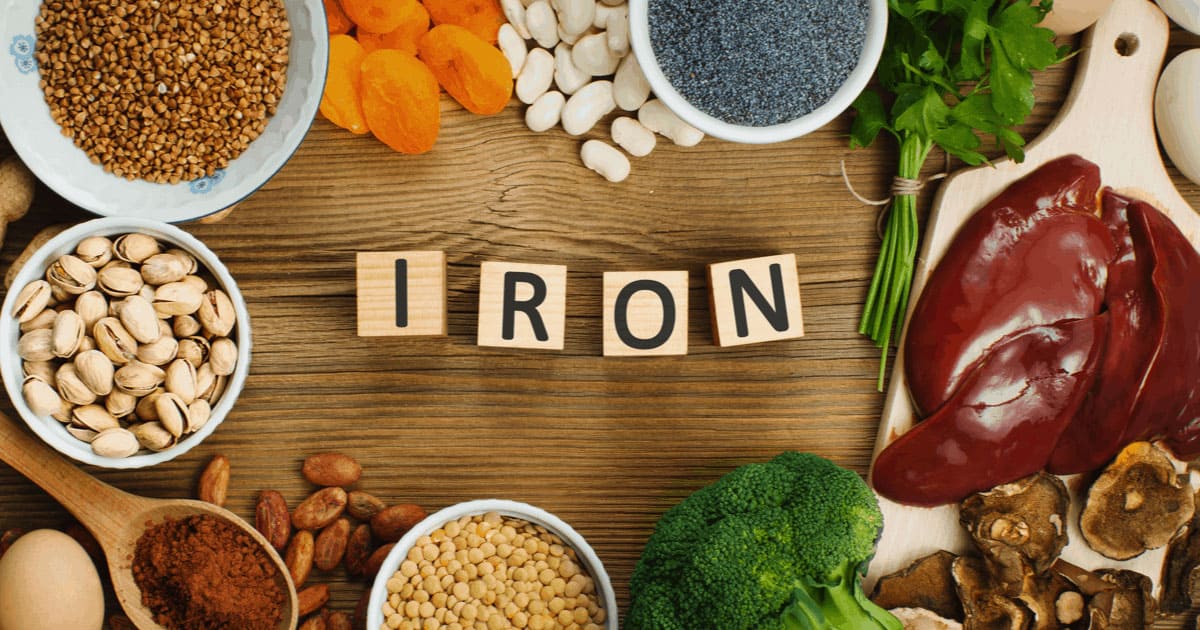


Iron is a mineral, and its main purpose is to carry oxygen in the hemoglobin of red blood cells throughout the body so cells can produce energy. Iron also helps remove carbon dioxide. When the body’s iron stores become so low that not enough normal red blood cells can be made to carry oxygen efficiently, a condition known as iron deficiency anemia develops.
There are two forms of dietary iron: heme and nonheme. Heme iron is derived from hemoglobin. It is found in animal foods that originally contained hemoglobin, such as red meats, fish, and poultry (meat, poultry, and seafood contain both heme and non-heme iron). Your body absorbs the most iron from heme sources. Most nonheme iron is from plant sources.
The body absorbs iron better when eaten with foods that contain vitamin C. Likewise, certain foods, such as calcium phosphate salts and tannic acids (found in tea and coffee) decreased the absorption of iron.
When you eat food with iron, iron is absorbed into your body mainly through the upper part of your small intestine.
How much iron do adults need daily?
The daily recommended amount of iron for adults ages 19-50 is:
· 18 milligrams a day for women
· 27 milligrams a day for pregnant women
· 8 milligrams a day for men
In general, women tend to need more iron to make up for what is lost during menstrual cycles. Women who are 51 and older should aim for 8 milligrams of iron daily.
Increasing iron in your diet
Choose foods high in iron at every meal. When selecting breakfast cereals, choose one fortified with at least 25% of the Daily Value for iron. Such as raisin bran, cream of wheat, whole wheat bread and enriched pasta or rice.
Foods rich in iron include beef, pork, turkey, chicken, tuna as well as kale, spinach, turnip greens, kidney beans, pinto beans, dried plums and dried apricots.
Cook in cast iron posts and pans to increase the iron content of foods.
Avoid drinking tea or coffee with meals.
To increase the absorption of iron from plant sources, it’s recommended to eat them with meat, seafood, or poultry or a good source of vitamin C, such as citrus fruits, kiwi, strawberries or bell peppers. Some other foods high in vitamin C include broccoli, brussel sprouts, sweet potatoes, cantaloupe and vegetable soup.
A good way to improve your iron intake is by eating a balanced, healthy diet that includes a variety of foods.
Resources:
